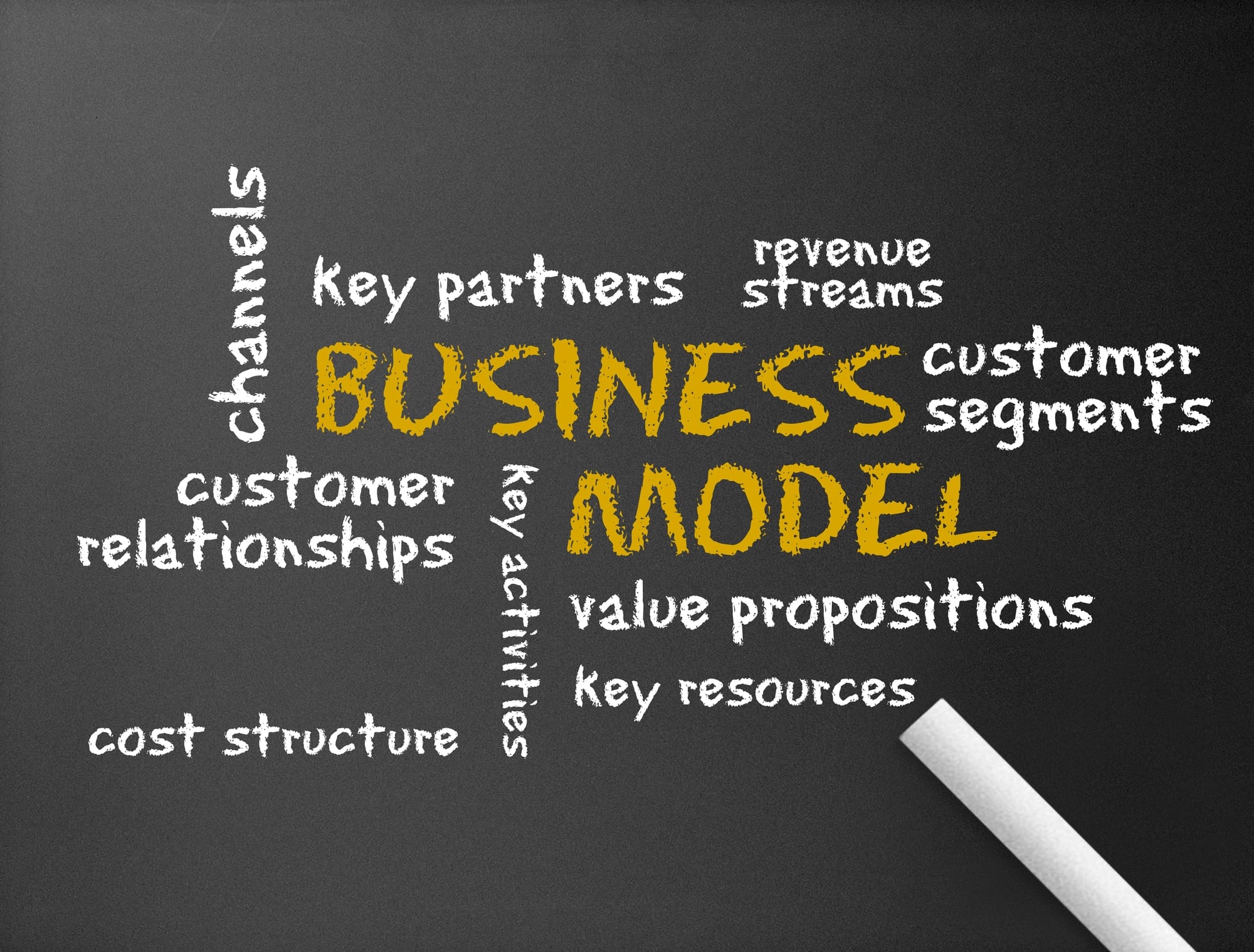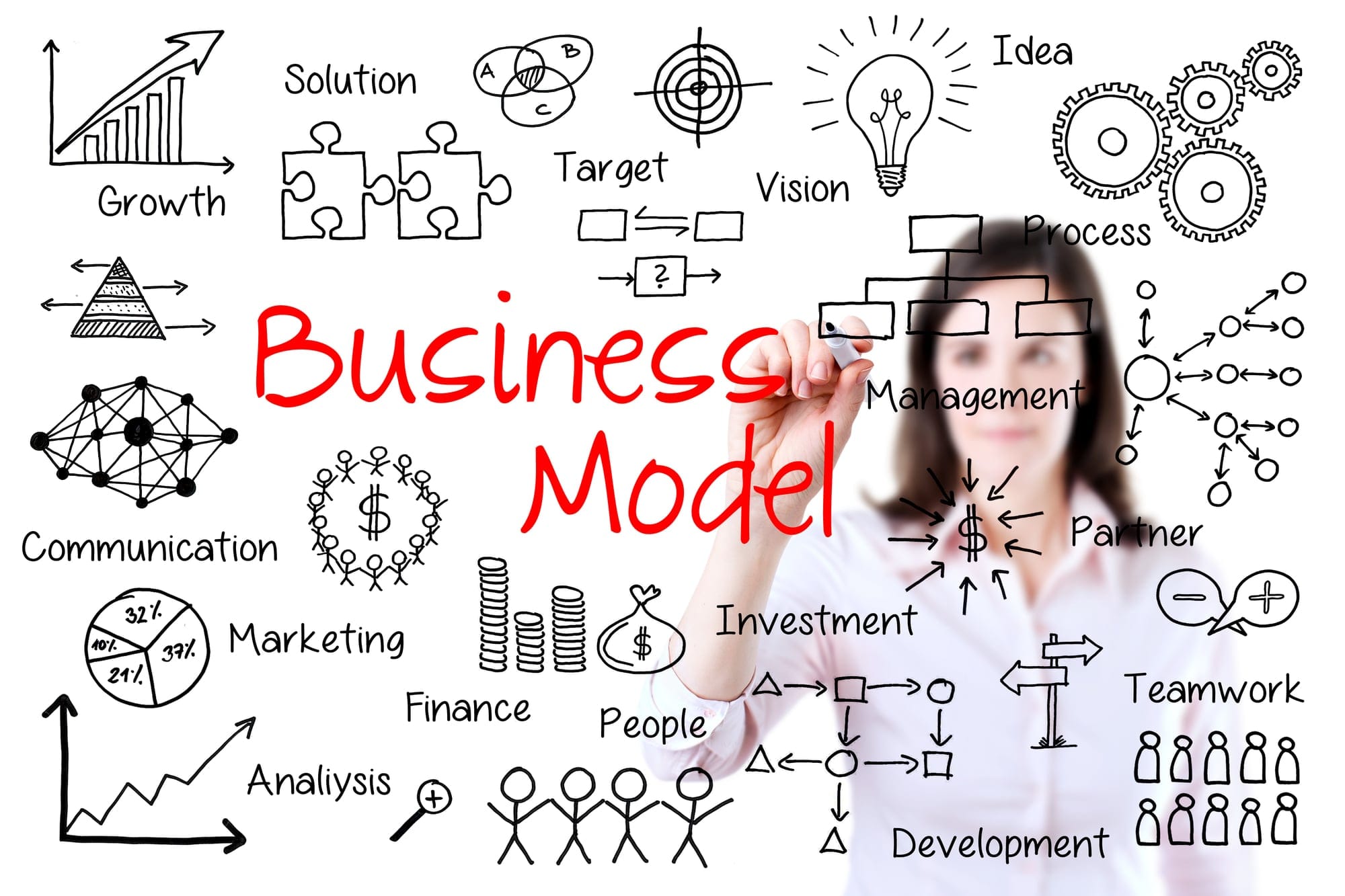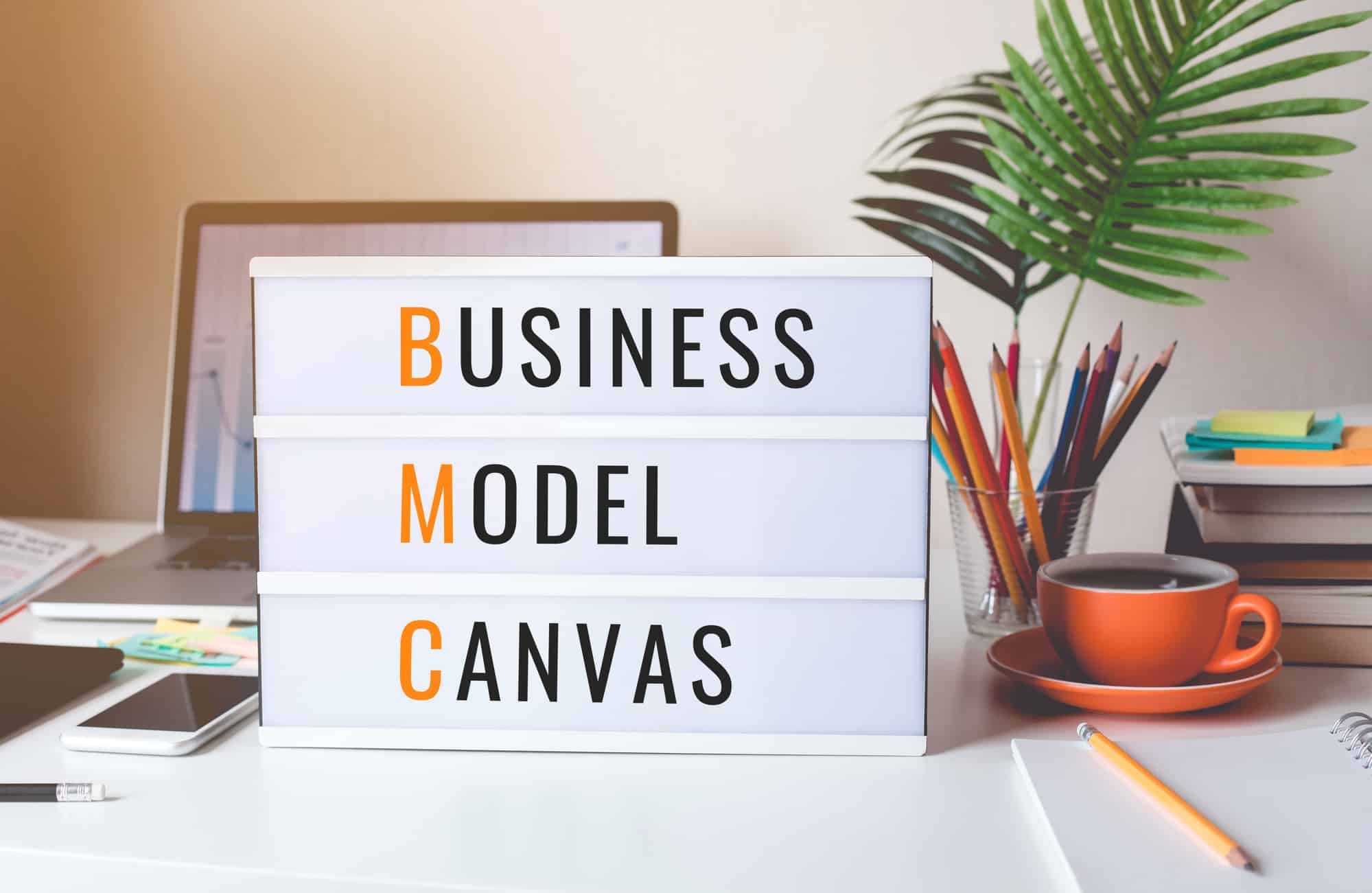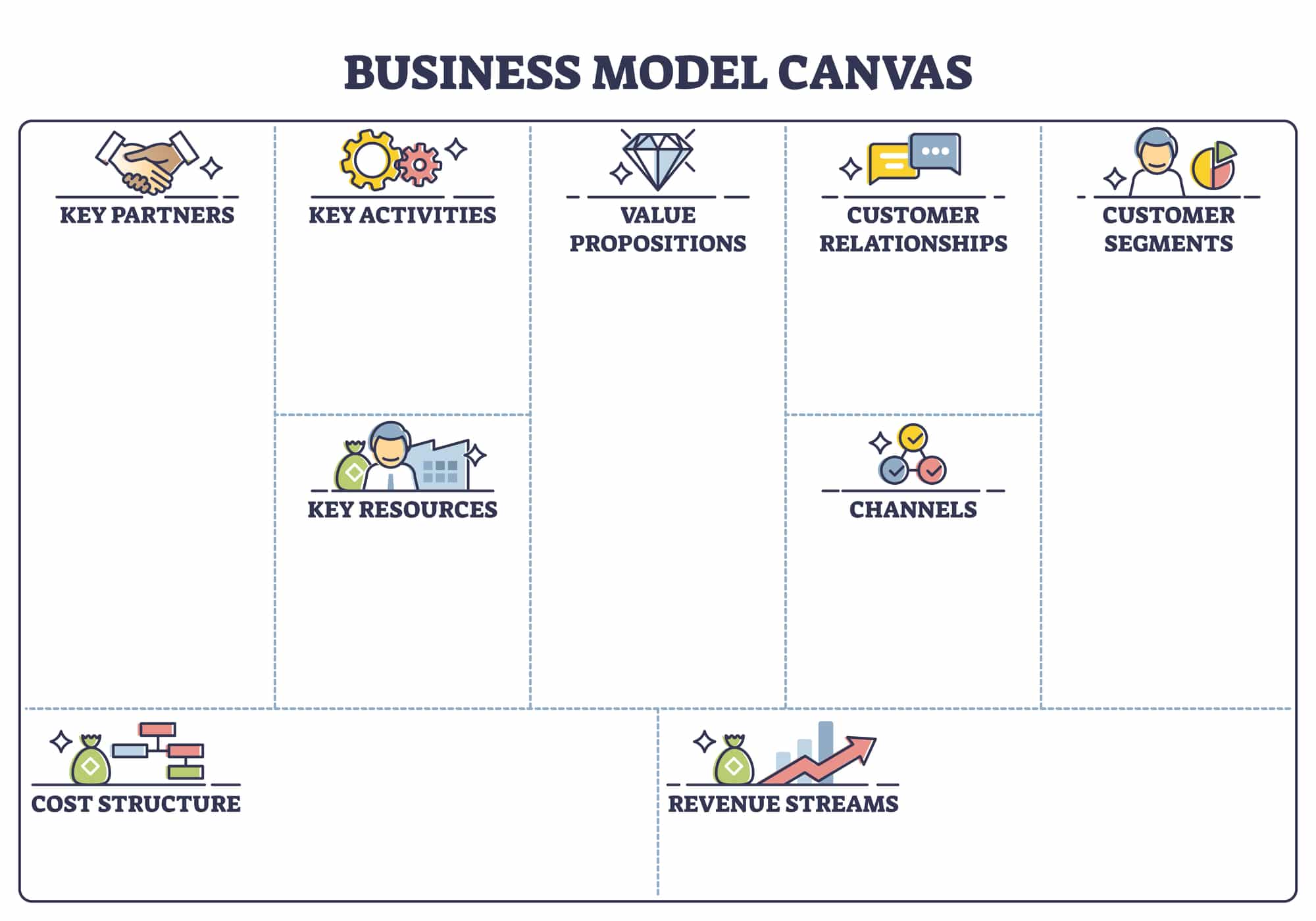A good and viable business model can actually serve to be the sole difference between a successful business and an unsuccessful one.
The act of doing business has been taking place for ages. No matter what point in history you look into, you will see the civilizations engaging in various forms of trading, bartering, selling, and buying activities as a means to sustain their livelihood.
They say that money makes the world go round, and boy are they right! Ever since the world started using currency as a mode of acceptable exchange for buying and selling various commodities and services, we have all been trying to get some for ourselves.
In an ideal world, everyone should have the same amount of money, so they all have access to basic necessities. However, we now live in a largely capitalistic world where every person is to fend for themselves, trying their best to earn as much as possible.
Though it is sad in a way that from the moment we step into adolescence, we have to figure out ways to start making something for ourselves, otherwise, life becomes very difficult.
Another perspective is that working hard to have a good lifestyle with good and abundant opportunities is also very important to not only survive but to live in today’s world. This is why we work endlessly.
The amount of job opportunities in the market increases exponentially when businesses are created; one new business venture can create hundreds and thousands of jobs over time. This is why business ventures are extremely important for any country to invest in.
The business world actually helps in supporting the country’s economy a great deal. But we also know many of them fail before they can contribute anything to anyone.
It is natural for some to succeed and most to fail in such a cut-throat competitive world where every business has major competition up to the point of saturation in some industries. Not every business idea is meant to change the world.
Although a lot can be said about the factors which actually set one business apart from the others often within the same industries at times, one very important factor is the business model.
A good and viable business model can actually serve to be the sole difference between a successful business and an unsuccessful one. So what exactly is a business model?
In the article ahead, you will get to learn all there is to know about business models.

What is a Business Model?
A business model, in the simplest of terms, is how a business chooses to generate profits. The most important three things to be considered while working on a business model are identifying the total expenses associated with the work, the exact target segments, and the revenue stream.
A business may have multiple revenue streams as well though most have one primary stream, which earns the most money as compared to the other streams. A business model serves as the road map for the business to follow so it can make good money.
Any solid business model should cover a few of the following basics:
Value Proposition
For those of you who might not be familiar, a value proposition, much as the name aptly suggests, is the description of the value a business has to offer its consumers.
For example, McDonald’s value proposition is to offer quick delicious food at economical prices. Similarly, Nike’s value proposition is an innovation, among other things.
A value proposition helps in accurately placing a brand name in the minds of the consumers, which is a very important thing to achieve as it increases the chances of brand loyalty and hence greater business.
If a brand or a business has nothing unique to offer, no aspects that set it apart from its competitors, then how would people actually spend their money on them?
This is why a business model must talk about the value proposition in clear terms.
Capital and Revenue
A good business model should mention very clearly where the capital is coming from to help kick start or take forward the business. Not only should it identify the sources of capital generation, but it should also explain how said capital will be utilized in business activities.
This is especially important for potential investors as well. Think about it, if an investor finds your business interesting and might be thinking of injecting some money into it, he or she would most definitely want to know how the business makes money.
Knowing where and from whom the business is receiving capital and how it earns money via its services will allow investors to make up their minds much faster. It increases the credibility of the business owners.
Marketing
It is one thing to have the money to work on getting the product or service out, but completely another thing to spread the word.
What use would be the business offerings if no one knows about it? A strong business model pays a lot of attention to the marketing strategy that promotes the products and services being produced and offered.
Depending on the target market and the nature of the business, the marketing strategy can be traditional, contemporary, or a combination of both.
Competitor Analysis
You must do your homework on the competition when building a business model. After all, if you don’t know what the competition has been up to, how do you plan on keeping up?
Understanding the competition will also help you understand the dynamics of the industry you operate in as well.
Although there can be other things to be discussed in a business model as well, these four are the key as they cover very vital and defining information.
Types of Business Models
Before we discuss the various types of business models that are being used around the globe, you should know that some businesses tend to use more than one model.
There are traditional business models and contemporary ones as well. Some businesses choose to roll with a hybrid version combining old and new business model components. Let’s take a look at some examples of each type to understand better how it all works.
Traditional Business Models
Here are some of the most commonly used traditional business models that you should be aware of.
Manufacturing
This type of business model is exactly what the name tells us; manufacturing. What the business does is it builds or puts together the finished product using a series of raw materials or components to come up with a saleable product.
Companies that tend to use this business model can either be B2C, i.e., they deal directly with consumers, or they may be B2B, i.e., dealing with other businesses. They can be both as well.
Intel, for instance, is renowned for manufacturing computer chips for so many computer and technology companies. It generates great business using the manufacturing model by selling products to other businesses.
Automobile companies serve as excellent examples of this business model. They manufacture vehicles that are ultimately sold to consumers.
Distribution
Businesses that choose this model actually work as the “middle man” between a manufacturing business and the general public, aka the target market.
This business model is successful because what they do is that they buy products in bulk which reduces their costs for them, and then sell them at rates that are not only convenient for the target audience but also profitable for the distributor.
Though it must be pointed out that finding the right balance between the expenses and the revenues is very challenging, and if not done properly, it can break down the business.
Sometimes distributors also sell products to retailers, who then sell the products to the intended customers. Distributors must invest a lot in market research to identify both the parties; the manufacturers and buyers.
Sephora is a very good example of a distributor, although it can also be used as a manufacturing example as it creates products under its brand label to sell. What Sephora does is that it provides cosmetic companies a platform to make sales.
Wholesalers can also be called distributors in some cases as they act as the middle people between manufacturers and the people who want to buy the products.
Retail
We all know what retailers are. Though a very simple business model, it never really goes out of style or need for that matter because not only is it very convenient for people, but they are also very important for manufacturers and distributors alike.
Retailers buy products from manufacturers or distributors and then sell them to customers.
Think of a world without retailers, how difficult would it be to buy so many necessities of life? Department stores, convenience stores, specialty stores, etc., are all very easy examples of retail stores.
Even the coffee bar you go to when you want to relax with a friend is an example of a retailer. Any shop that sells a commodity or different varieties of commodities can qualify as a retailer.
Franchising
You must have heard the word franchise a lot in random conversations with people, and most of you might know what it is. However, the concept is a bit more elaborate.
When businesses want to grow their reach, they often employ the franchising model as it allows them easy and low-cost expansion. The franchisor gives the rights to their brand, trademarks, and business to a willing franchisee who must pay for these things.
Typically, most franchise expansions consist of three basic payments; the first payment is made by the franchisee to be able to use the trademarks of the brand, which allows controlling rights.
The second payment is often made to the franchisor to have the training, important equipment, other essential services, etc., for the new franchise. This is done to ensure standardization of the service.
Lastly, franchisors receive royalty payments from their franchisees which is pretty much an ongoing payment process, unlike the first two forms of payment.
Macdonald’s is the best example of a franchise business model because all the branches of the food chain that you know of across the world in so many countries are all actually franchises, meaning that your local Macdonald’s is actually a franchise of the first one.
Brick and Mortar
The name is a bit different from the actual meaning; these stores are the ones you can physically go to where the business sells directly to the customers.
Any corner shop near your home, the grocery store, or any other business that you can go to at their physical location is brick and mortar.
Ever since online selling has become the norm around the globe, traditional brick-and-mortar stores are losing their importance however they still exist because there are so many consumers who still prefer actually to go and see what they buy.
Many people are a bit averse to online shopping as well because of the potential for credit card fraud. Some people are not very tech savvy, so they prefer to shop the traditional way.
Many brick-and-mortar businesses have also made an online presence for themselves as well for consumers who want to purchase online.
Costco is a good example of this; they used to be a traditional brick-and-mortar business, but now they sell many products on their website. Customers have the option to buy online but to pick up the product in person as well.
This way, people still enter the store, thereby making the brick and mortar a very successful approach for this wholesale giant.
Contemporary Business Models
Because times have evolved, there are many more types of business models that we see around. Here are some of the most commonly used ones these days:
Freemium
This word you read combines “free” and “premium,” which seems to be an oxymoron. However, it is actually pretty genius.
Businesses that use the freemium model offer a part of their service to consumers for free but offer upgrades and additional features at a premium price.
The idea is to give users a chance to start using a service so they can become used to it, and once they are invested, they would be willing to pay something to get extra benefits and perks.
YouTube uses this model, amongst others. The basic version of YouTube is absolutely free and can be used by anyone who harbors an internet connection. The premium version offers an ad-free experience which for many users is vital.
Similarly, Spotify is also a freemium service where some of their services is free of cost, but to get the full immersive experience, users have to pay a premium.
Subscription
As the name says, consumers subscribe to a service by paying a perpetual fee for it for as long as they would want to avail of it.
Subscriptions can be monthly or even yearly, depending on the business. Those who want to become customers must pay regularly to be subscribed members.
Software companies very commonly offer subscriptions to users to be able to use their software. Netflix is a modern-day business that uses this model as well. They offer different packages for different budgets that people have.
Although it is a relatively simple business model, Netflix has made it work really well for their business.
Bundles
Bundling also works as a good business model because when the cost of attracting a customer is high, it makes it possible to sell more to that one customer.
What the business does is that it provides a combination of either products or services at bundle prices that are lower than what each of those items would cost independently.
Although bundling might not be used as an exclusive business model in many cases, it does work for various businesses in combination with other types of business models.
Fast food chains offer many bundles and combos that cost less than buying every food item separately. Cosmetics brands are known to offer many bundles for people to sell more of their products.
Telecom companies such as AT&T heavily rely on bundling to offer a variety of services in bundles such as free minutes, internet service, data, and SMS to their users.
Affiliate
Many companies choose to invest in affiliate programs when they want to promote or market their products to a specific niche.
You will most commonly see this model being used by brands that work with social media influencers to promote their goods and services.
Think of all of the content these influencers produce on the internet; you will recall many examples of when they offer a discount code for their fans for buying certain things. They get paid by the brands by boosting their sales.
Many traveling websites and blogs also have affiliate links which, when used to access the promoted product add to the earnings of these bloggers.
Brands find it easy to spend on these promoters so that more and more of the people that follow them get to know about said brands. It raises brand awareness amongst relevant audiences.
Razor Blade
This model is actually named after the product itself because it so accurately explains how it works. See, to be able to use a razor, one must also purchase blades otherwise, just the razor on its own is of no practical use.
Companies tend to sell high costing products at lower prices because they more than make up for the loss when the “blade” component is constantly purchased. Printers are a very good example of this model.
The actual printer is not such a big investment, but it does require one to constantly purchase ink.
There is a reverse razor blade model as well, which means that the costly part of the product is sold up-front at the point of purchase, whereas other less costly but needed components are sold separately.
Smartphones can be used to explain the reverse razor blade model because the phone is sold to the customer but other accessories have to be bought e.g. chargers and earphones in the case of iPhone.

How to Choose the Best Business Model
Our discussion above has explained how there are so many types of business models to choose from and that most businesses use a variety of them.
Choosing the correct model or models for a business is a very important decision to be made because, honestly, this model determines future profitability. So how do you choose the perfect model for your business? There is a lot that goes into consideration:
Target Market
A business model will only bring in money if it is being used for the right target market. Knowing what the people belonging to your business’s target market will do will tell you a lot about their spending patterns.
If you are targeting teens and young adults, you know that they live life on a budget, so maybe using the bundle model would make more sense in this case.
If your target market has tech users, then using more contemporary online-based selling models would help your business more.
So the point is that understanding and seeing what the target market consists of is very important before deciding what model suits you best.
Product/Service
The product or service that your business decides to sell is also a very big factor in choosing a business model. Can you see Netflix changing its subscription-based model to a more traditional pay-as-you-go one? Imagine having to buy or rent every single series or movie before you can watch it.
The nature of what you sell tells a lot about what means would be more convenient. If you have a small home-based business, you can easily sell online. However, if you own a store, you can employ a mix of brick-and-mortar or even franchising should you think of expansion.
The bottom line is that the offerings you have, play a big role in choosing the appropriate model for your business.
Industry
Depending on the industry in which you operate, your business model has to be appropriate. In many cases, one might have to build similar models as other competitors in the industry.
All fast-food chains make use of franchising to expand. All telecoms are known to offer bundle packages and services.
Knowing the industry requirements will help you understand what works and what simply does not, so you won’t have to waste any resources.
Revenue
Ultimately a business model is successful if it pulls in money. That is the sole reason we try so hard to make the model perfect after all.
Depending on the nature of the business, its size, scale and scope, every business would need to select an appropriate model.
For some businesses, the brick and mortar continue to work perfectly despite there being much more advanced models as well. Some businesses might be very costly to invest in, but they still use freemium models to give a taste of their products to customers before they charge anything.
As long as a business model or a combination of a few bring in a healthy revenue stream that leaves enough profit, it is a good fit.

Business Model Canvas
No discussion about business models can be complete without discussing the business model canvas.
It won’t be too far off to say that the business model canvas visualizes the business model. The canvas consists of a combination of small squares, each with its own heading, under which you can write the appropriate piece of information.
The purpose of the canvas is to explain or depict the business model in a precise and easy manner. A business model canvas consists of the following:
Key Partners
This portion highlights all of the key partners the business has. These may include the suppliers as well. Basically, any party from whom you take any resources can be mentioned here.
A business can have four types of partnerships; joint ventures, strategic alliance, co-opetition (combination of cooperation and competition), and buyer/supplier relationships.
Key Activities
These are all the activities that are essential for the smooth functioning of the business. The main thing to be thought of here is how these activities can influence the distribution channels, customer relationships, and revenue stream to get the most benefit.
Key Resources
Every business needs some important resources to be able to perform its activities. In this section, all important resources for the business are mentioned. Resources in businesses generally are divided into human, physical, intellectual, and financial.
Value Propositions
This is what the brand essentially offers to customers; the value that they offer, the problems they solve, the needs they cater to, and the segments they sell to.
It is a very important component of the business model.
Customer Relationships
Customers have certain expectations from businesses that they support. This is why harboring customer relationships is very important for a business.
Building customer loyalty and assessing the cost of establishing these relationships in the form of after-sales service or personal assistance are some of the things which are mentioned here.
Customer Segments
As stated here, the target markets, particularly the segments, niches, mass markets, etc., are identified, so it is very clear who the business works toward.
Distribution Channels
Here all the important channels that the business uses to get the product to the customers are mentioned. These channels may be direct or indirect and may be of more than one type.
Cost Structure
Here the costs that will arise in setting up business activities are mentioned. The biggest costs are generally written here because it becomes very tedious to mention every little item.
It makes it easier to find the most expensive resource the business has and whether or not it is useful.
Revenue
This portion mentions all of the revenue streams that the business brings in. One can better assess which stream is meant to be kept and which one can be left.

Lean Business Model
It would be unfair not to mention the lean business model when discussing this topic. For those of you who might not be familiar with the concept, putting it simply, a lean business is intently focused on minimizing waste, all the while maximizing profits.
Not only is it an excellent way to reduce costs and maximize profits, but it is also a model that is ultimately better for the environment.
This is because when only limited resources are used, they are consumed sustainably, and there is less pollution as a consequence.
Toyota is the most renowned example of a lean business as their Just-in-Time techniques personify the lean model. The company very proudly explains this concept as making only "what is needed, when it is needed, and in the amount needed."
7 Principles of Lean Business
- Optimize the whole
- Eliminate waste
- Build quality in the process
- Deliver fast
- Create knowledge
- Be sure before committing
- Respect people
Conclusion
If you have managed to read this all the way to the end, then you are either an avid reader or someone who really wants to understand business models!
That being said, it is safe to say that after reading this article, you know a thing or two about what business models are, how many there are, how they help, and how they can be built.
We also got to see the business model canvas and all of its components. The article also discussed one of the most interesting business models, i.e., lean business models, to see how business can be done in a sustainable fashion. Whether you are working on a business venture of your own or you are working for some business, understanding business models are surely going to be of value in your professional life.


